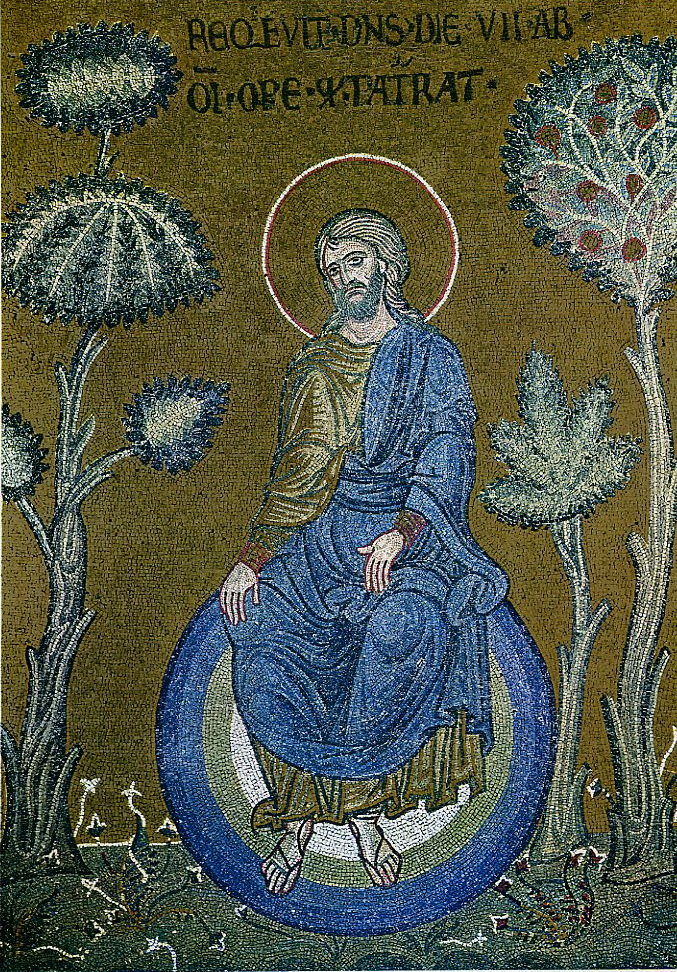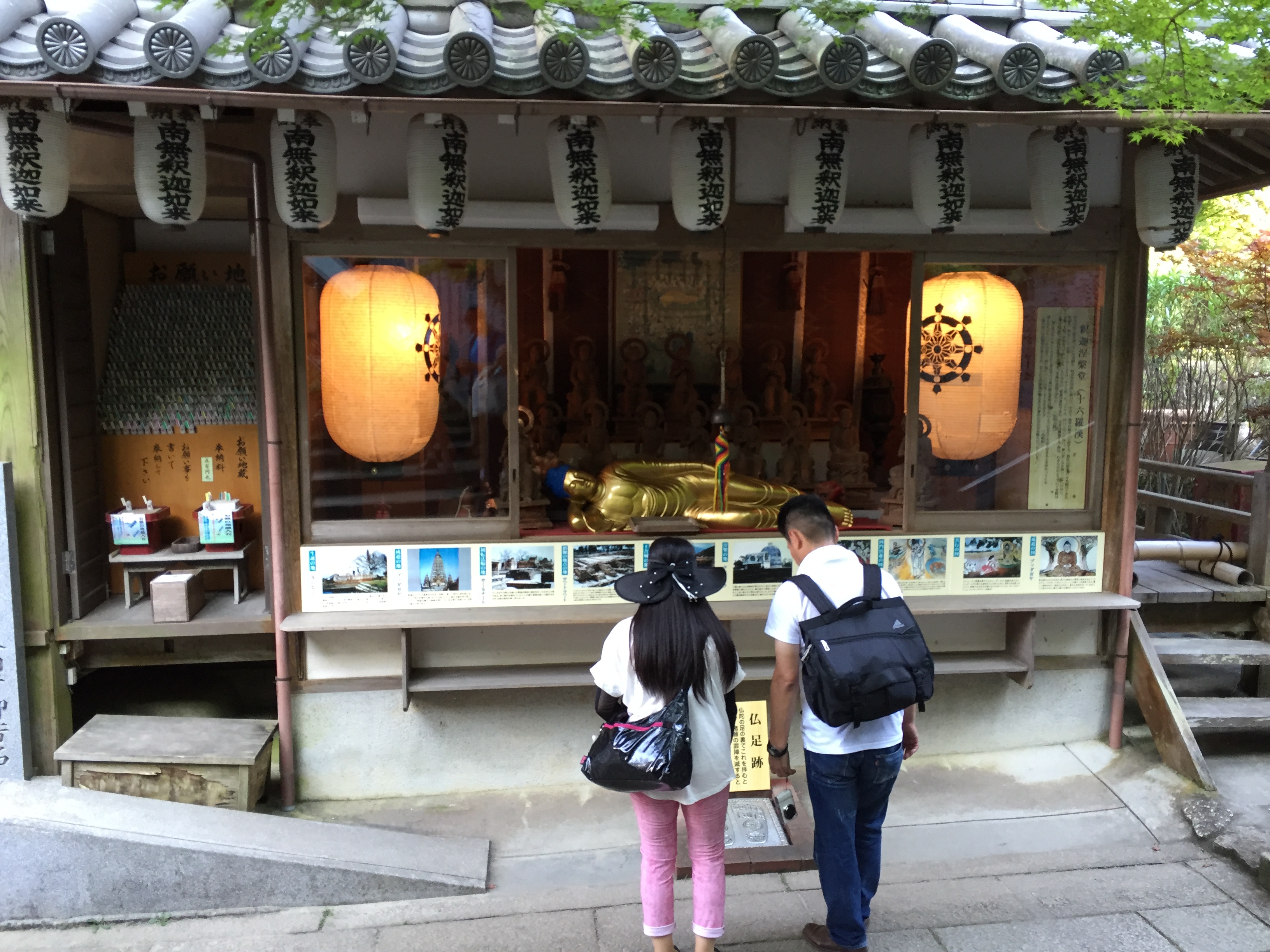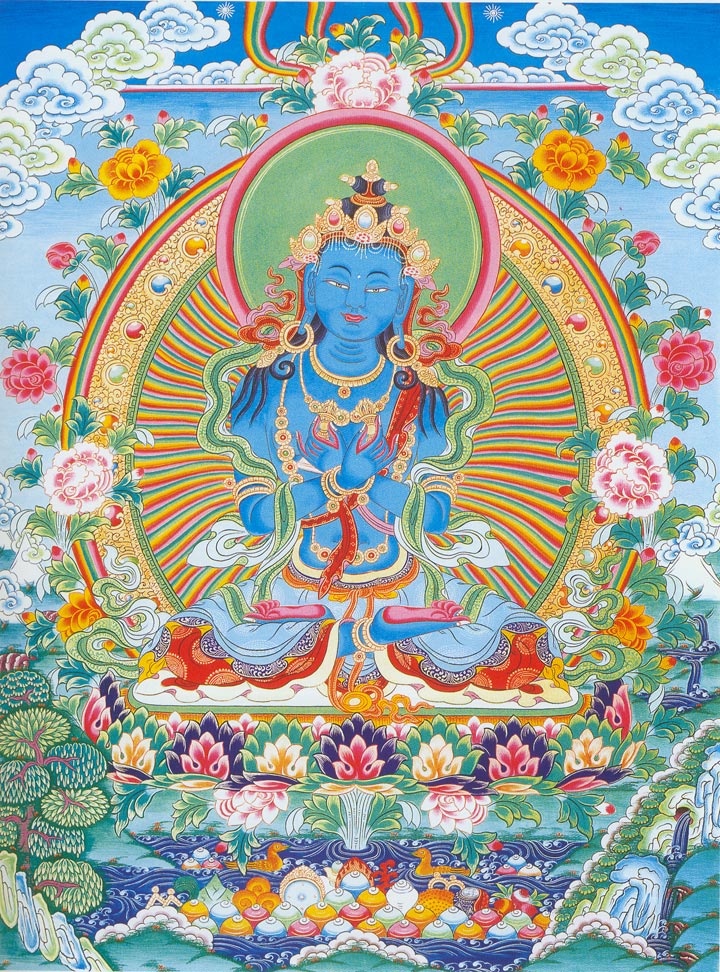|
Eternal Buddha
In East Asian Buddhism, Shakyamuni Buddha of the Essential Teachings (Chapters 15-28) of the Lotus Sutra is considered the eternal Buddha. In the sixteenth chapter of the Lotus Sutra, Shakyamuni Buddha reveals that he actually attained Buddhahood in the inconceivably remote past. The Eternal Buddha is contrasted to Shakyamuni Buddha who attained enlightenment for the first time in India, which was taught in the pre-Lotus Sutra teachings. The belief in the Eternal Buddha transcends through time and is commonly associated with Shakyamuni Buddha, but can also refer to both his past and future incarnations. However, no exact definition of the ''Eternal Buddha'' is defined in the Lotus Sutra, which was also revealed by Siddhartha Gautama; thereby making open interpretations to various religious groups. Lotus Sutra and tathagatagarbha doctrine In east-Asian Buddhism, the Buddha of the Lotus Sutra is regarded as the eternal Buddha. "The Tathagata´s Lifespan" chapter (ch 16) of the Lotu ... [...More Info...] [...Related Items...] OR: [Wikipedia] [Google] [Baidu] |
East Asian Buddhism
East Asian Buddhism or East Asian Mahayana is a collective term for the schools of Mahāyāna Buddhism that developed across East Asia which follow the Chinese Buddhist canon. These include the various forms of Chinese, Japanese, Korean, and Vietnamese Buddhism in East Asia.Jones, Charles B. (2021). ''Pure Land: History, Tradition, and Practice'', p. xii. Shambhala Publications, . East Asian Buddhists constitute the numerically largest body of Buddhist traditions in the world, numbering over half of the world's Buddhists. East Asian forms of Buddhism all derive from sinicized Buddhist schools that developed between the Han dynasty, as such religious transmissions were able to be afforded to enable the inexorable percolation of Buddhism into East Asia over a millenia due to the vibrant cultural exchanges that were able to be made at that time as a result of trade contacts with Central and South Asia along the Silk Road (when Buddhism was first introduced from Central Asia and ... [...More Info...] [...Related Items...] OR: [Wikipedia] [Google] [Baidu] |
Shingon Buddhism
Shingon monks at Mount Koya is one of the major schools of Buddhism in Japan and one of the few surviving Vajrayana lineages in East Asia, originally spread from India to China through traveling monks such as Vajrabodhi and Amoghavajra. Known in Chinese as the Tangmi (; the Esoteric School in Tang Dynasty of China), these esoteric teachings would later flourish in Japan under the auspices of a Buddhist monk named Kūkai (), who traveled to Tang China to acquire and request transmission of the esoteric teachings. For that reason, it is often called Japanese Esoteric Buddhism, or Orthodox Esoteric Buddhism. The word ''shingon'' is the Japanese reading of the Chinese word ('), which is the translation of the Sanskrit word ("mantra"). History Shingon Buddhist doctrine and teachings arose during the Heian period (794-1185) after a Buddhist monk named Kūkai traveled to China in 804 to study Esoteric Buddhist practices in the city of Xi'an (), then called Chang-an, at ... [...More Info...] [...Related Items...] OR: [Wikipedia] [Google] [Baidu] |
Buddhas
In Buddhism, Buddha (; Pali, Sanskrit: 𑀩𑀼𑀤𑁆𑀥, बुद्ध), "awakened one", is a title for those who are awake, and have attained nirvana and Buddhahood through their own efforts and insight, without a teacher to point out the dharma (Sanskrit 𑀥𑀭𑁆𑀫; Pali ''dhamma''; "right way of living"). The title is most commonly used for Gautama Buddha, the founder of Buddhism, who is often simply known as "the Buddha". Buddhahood ( sa, 𑀩𑀼𑀤𑁆𑀥𑀢𑁆𑀯, buddhatva; pi, buddhatta or ; ) is the condition and rank of a buddha "awakened one". This highest spiritual state of being is also termed ''sammā-sambodhi'' (skt. samyaksaṃbodhi 'full complete awakening'). The title is also used for other beings who have achieved ''bodhi'' (awakening) and ''moksha'' (release from craving), such as the other human Buddhas who achieved enlightenment before Gautama, the five celestial Buddhas worshiped primarily in Mahayana, and the bodhisattva named Mai ... [...More Info...] [...Related Items...] OR: [Wikipedia] [Google] [Baidu] |
Honolulu
Honolulu (; ) is the capital and largest city of the U.S. state of Hawaii, which is in the Pacific Ocean. It is an unincorporated county seat of the consolidated City and County of Honolulu, situated along the southeast coast of the island of Oahu, and is the westernmost and southernmost major U.S. city. Honolulu is Hawaii's main gateway to the world. It is also a major hub for business, finance, hospitality, and military defense in both the state and Oceania. The city is characterized by a mix of various Asian, Western, and Pacific cultures, reflected in its diverse demography, cuisine, and traditions. ''Honolulu'' means "sheltered harbor" or "calm port" in Hawaiian; its old name, ''Kou'', roughly encompasses the area from Nuuanu Avenue to Alakea Street and from Hotel Street to Queen Street, which is the heart of the present downtown district. The city's desirability as a port accounts for its historical growth and importance in the Hawaiian archipelago and the broader P ... [...More Info...] [...Related Items...] OR: [Wikipedia] [Google] [Baidu] |
University Of Hawaii Press
A university () is an institution of higher (or tertiary) education and research which awards academic degrees in several academic disciplines. Universities typically offer both undergraduate and postgraduate programs. In the United States, the designation is reserved for colleges that have a graduate school. The word ''university'' is derived from the Latin ''universitas magistrorum et scholarium'', which roughly means "community of teachers and scholars". The first universities were created in Europe by Catholic Church monks. The University of Bologna (''Università di Bologna''), founded in 1088, is the first university in the sense of: *Being a high degree-awarding institute. *Having independence from the ecclesiastic schools, although conducted by both clergy and non-clergy. *Using the word ''universitas'' (which was coined at its foundation). *Issuing secular and non-secular degrees: grammar, rhetoric, logic, theology, canon law, notarial law.Hunt Janin: "The university i ... [...More Info...] [...Related Items...] OR: [Wikipedia] [Google] [Baidu] |
Pre-existence Of Christ
The pre-existence of Christ asserts the existence of Christ before his incarnation as Jesus. One of the relevant Bible passages is where, in the Trinitarian interpretation, Christ is identified with a pre-existent divine hypostasis (substantive reality) called the Logos or Word. There are nontrinitarian views that question the aspect of personal pre-existence or the aspect of divinity or both. More particularly, John 1:15,18 says: This doctrine is supported in when Jesus refers to the glory which he had with the Father "before the world existed" during the Farewell Discourse.''Creation and Christology'' by Masanobu Endo 2002 page 233 also refers to the Father loving Jesus "before the foundation of the world". Nicene Christianity The pre-existence of Christ is a central tenet of mainstream Christianity. Most mainstream churches that accept the Nicene Creed consider the nature of Christ's pre-existence as the divine hypostasis called the Logos or Word, described in , whi ... [...More Info...] [...Related Items...] OR: [Wikipedia] [Google] [Baidu] |
Tathagatagarbha
Buddha-nature refers to several related Mahayana Buddhist terms, including '' tathata'' ("suchness") but most notably ''tathāgatagarbha'' and ''buddhadhātu''. ''Tathāgatagarbha'' means "the womb" or "embryo" (''garbha'') of the "thus-gone" (''tathāgata''), or "containing a ''tathāgata''", while ''buddhadhātu'' literally means "Buddha-realm" or "Buddha-substrate". Buddha-nature has a wide range of (sometimes conflicting) meanings in Indian and later East Asian and Tibetan Buddhist literature. Broadly speaking, the terms refer to the potential for all sentient beings to be a Buddha, since the luminous mind, "the natural and true state of the mind," the pure (''visuddhi'') mind undefiled by kleshas, is inherently present in every sentient being. It will shine forth when it is cleansed of the defilements, c.q. when the nature of mind is recognised for what it is. The ''Mahāyāna Mahāparinirvāṇa Sūtra'' (written 2nd century CE), which was very influential in the C ... [...More Info...] [...Related Items...] OR: [Wikipedia] [Google] [Baidu] |
Tathagatagarbha Sutra
Buddha-nature refers to several related Mahayana Buddhist terms, including '' tathata'' ("suchness") but most notably ''tathāgatagarbha'' and ''buddhadhātu''. ''Tathāgatagarbha'' means "the womb" or "embryo" (''garbha'') of the "thus-gone" (''tathāgata''), or "containing a ''tathāgata''", while ''buddhadhātu'' literally means "Buddha-realm" or "Buddha-substrate". Buddha-nature has a wide range of (sometimes conflicting) meanings in Indian and later East Asian and Tibetan Buddhist literature. Broadly speaking, the terms refer to the potential for all sentient beings to be a Buddha, since the luminous mind, "the natural and true state of the mind," the pure (''visuddhi'') mind undefiled by kleshas, is inherently present in every sentient being. It will shine forth when it is cleansed of the defilements, c.q. when the nature of mind is recognised for what it is. The ''Mahāyāna Mahāparinirvāṇa Sūtra'' (written 2nd century CE), which was very influential in the Ch ... [...More Info...] [...Related Items...] OR: [Wikipedia] [Google] [Baidu] |
Srimala Sutra
Bhinmal (previously Shrimal Nagar) is an ancient town in the Jalore District of Rajasthan, India. It is south of Jalore. Bhinmal was the capital of the Bhil king, then the capital of Gurjaradesa, comprising modern-day southern Rajasthan and northern Gujarat. The town was the birthplace of the Sanskrit poet Magha and famous mathematician-astronomer Brahmagupta. History The original name of Bhinmal was Bhillamala. Its older name was Srimal, from which Shrimali Brahmins took their name Xuanzang, the Chinese Buddhist pilgrim who visited India between 631 and 645 AD during Harsha's reign, mentioned this place as ''Pi-lo-mo-lo''. There are different views about the origin of its name. Some suggest it may be due to its Bhil population, whereas Shrimalamahatmaya, says it began to be called Bhinmal because of the poverty caused by Islamic invaders, which caused most of its people to migrate from this place. It was the early capital of the kingdom of Gurjaradesa. The kingdom is first ... [...More Info...] [...Related Items...] OR: [Wikipedia] [Google] [Baidu] |
Mahaparinirvana Sutra
In Buddhism, ''parinirvana'' (Sanskrit: '; Pali: ') is commonly used to refer to nirvana-after-death, which occurs upon the death of someone who has attained ''nirvana'' during their lifetime. It implies a release from '' '', karma and rebirth as well as the dissolution of the ''skandhas''. In some Mahāyāna scriptures, notably the ''Mahāyāna Mahāparinirvāṇa Sūtra'', ''parinirvāṇa'' is described as the realm of the eternal true Self of the Buddha. In the Buddha in art, the event is represented by a reclining Buddha figure, often surrounded by disciples. Nirvana after death In the Buddhist view, when ordinary people die, each person's unresolved karma passes on to a new birth instantaneously; and thus the karmic inheritance is reborn in one of the six realms of '' samsara''. However, when a person attains nirvana, they are liberated from karmic rebirth. When such a person dies, it is the end of the cycle of rebirth, the Samsara and the Karma. Contemporary scholar Ru ... [...More Info...] [...Related Items...] OR: [Wikipedia] [Google] [Baidu] |
Adi-Buddha
In Vajrayana Buddhism, the Ādi-Buddha () is the "First Buddha" or the "Primordial Buddha". Another common term for this figure is Dharmakāya Buddha. The term emerges in tantric Buddhist literature, most prominently in the Kalachakra.Buswell, Robert E.; Lopez, Jr., Donald S. (2013). ''The Princeton dictionary of Buddhism''. Princeton: Princeton University Press. . Entry on "ādibuddha". "Ādi" means "first", such that the Ādibuddha was the first to attain Buddhahood. "Ādi" can also mean "primordial", not referring to a person but to an innate wisdom that is present in all sentient beings. In Indo-Tibetan Buddhism In Indo-Tibetan Buddhism, the term Ādibuddha is often used to describe the Buddha Samantabhadra (in Nyingma), Vajradhara or Kalachakra (in the Sarma schools).Wayman, Alex; The Buddhist Tantras: Light on Indo-Tibetan esotericism, page 53. There was also a tradition in India which saw Mañjuśrī as the Ādibuddha, as exemplified by Vilāsavajra's commentary to t ... [...More Info...] [...Related Items...] OR: [Wikipedia] [Google] [Baidu] |


.jpeg/1200px-Gandhara_Buddha_(tnm).jpeg)





